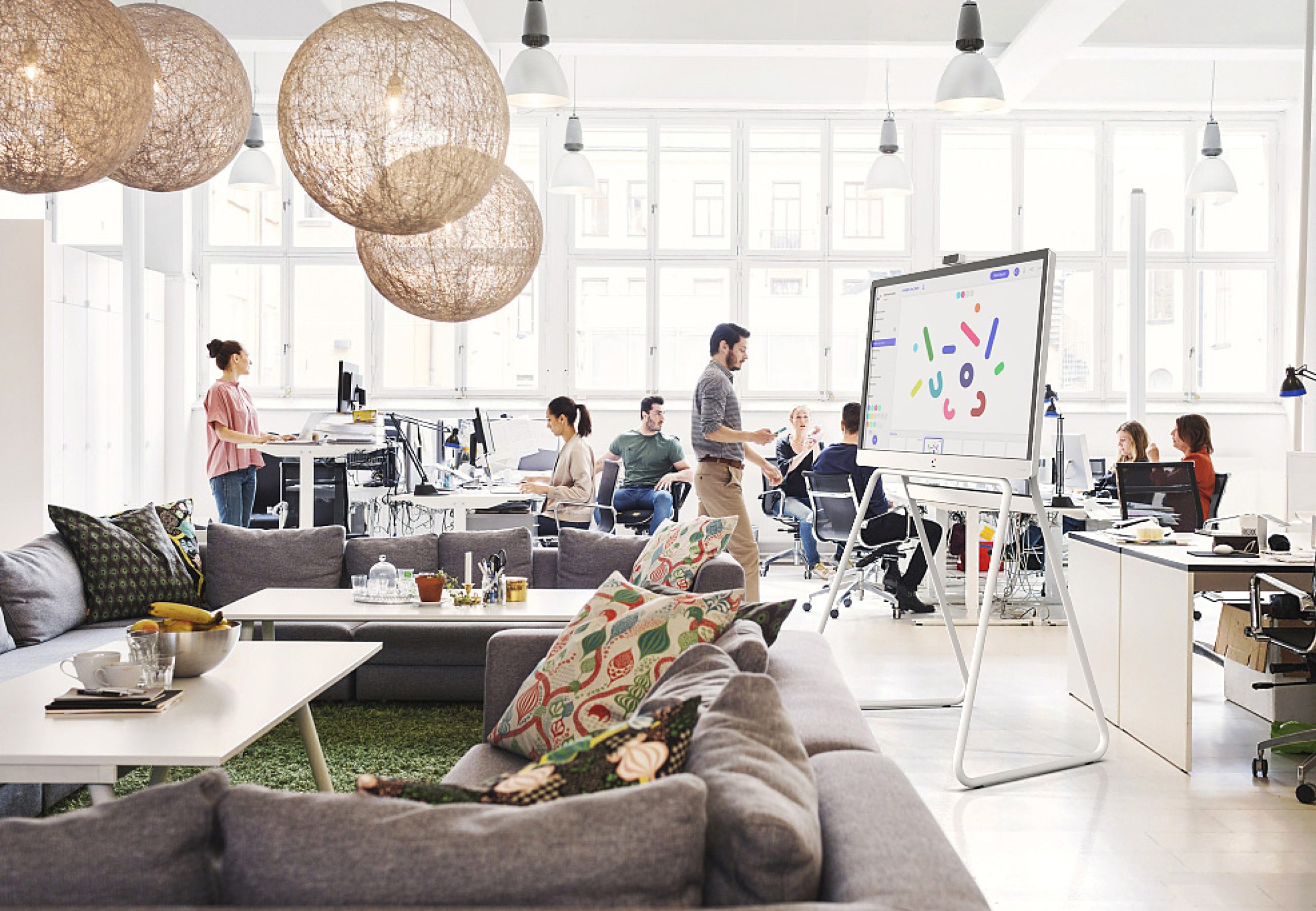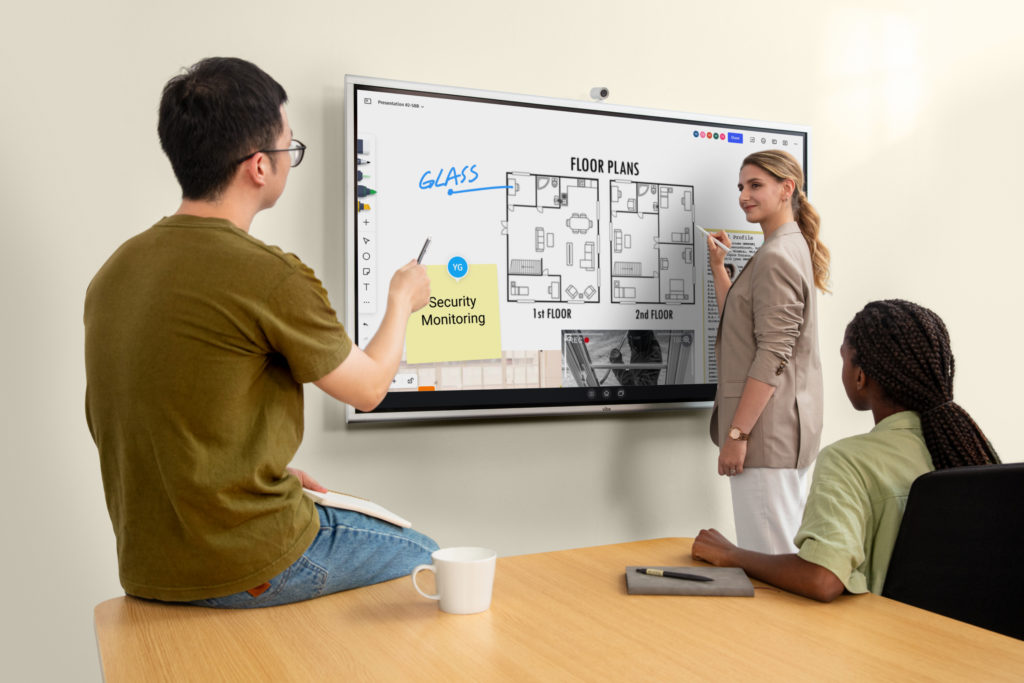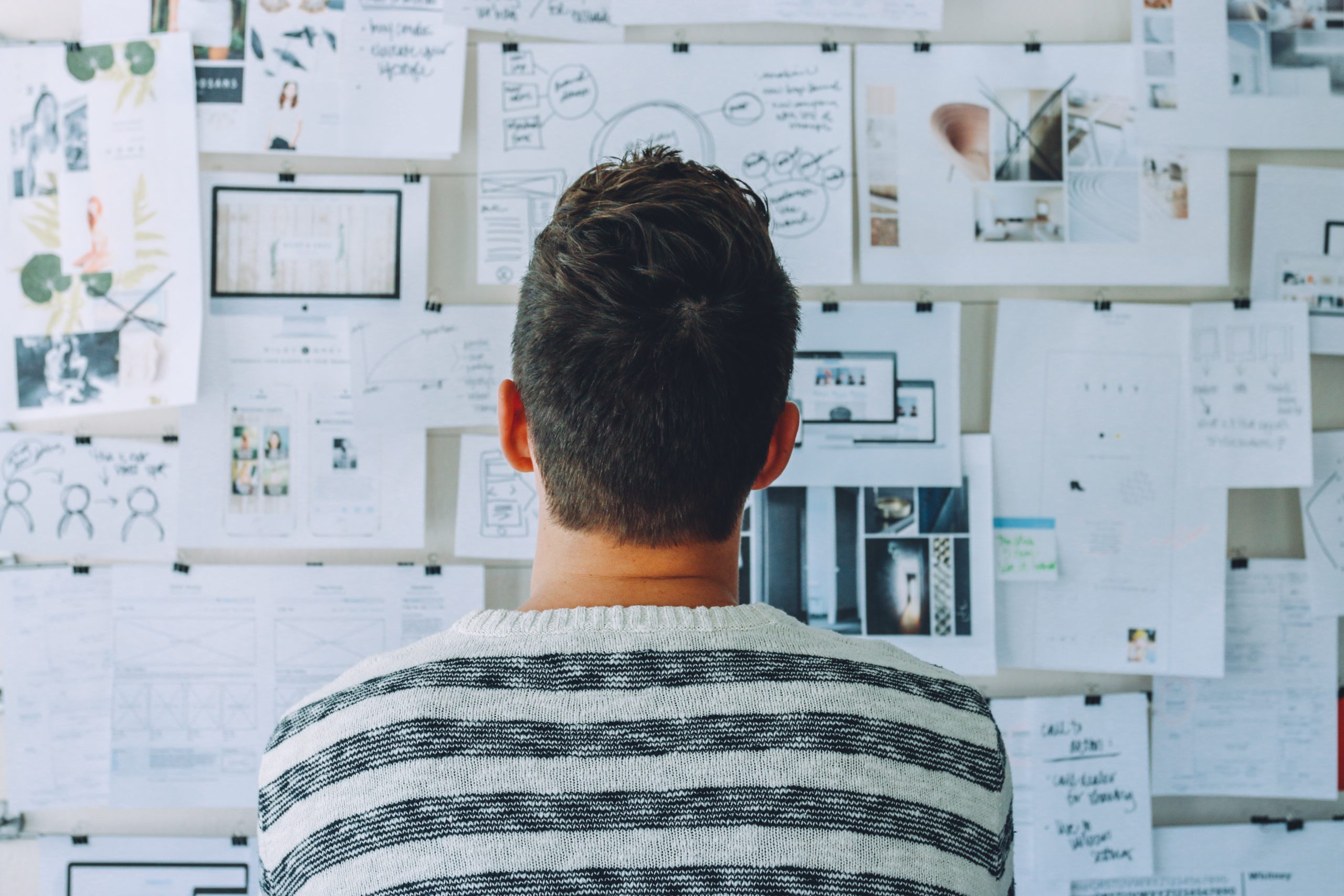Have you ever noticed that you’re more productive in a certain room or building? Maybe you’re drawn to the configuration of furniture, the technology available, or even the general culture of the space. Whatever the reason, the way we think, feel, and act has a lot to do with the environment we’re in. When Capital One surveyed 3,500 employees, 77% said they perform better when their workplaces provide collaboration spaces, and 88% said areas for heads-down work improve their performance. Intentionally creating creative workspaces can spark new ideas and inspire some of your best work.
- Creative workspaces blend flexible zones for collaboration, quiet focus areas, and adaptable tools so the environment fits the task, not the other way around.
- Intentional design choices—natural light, ergonomic furniture, writable surfaces, and modular layouts—reduce friction and help ideas move faster.
- These workspaces boost outcomes: higher productivity, stronger collaboration, deeper focus, better morale, and improved talent attraction and retention.
- A practical approach is to start small and gradually implement aspects of creative workspaces over time.
- The right tools can make investing in creative workspaces easier.
What are Creative Workspaces?
A creative workspace is a physical environment intentionally designed to support collaboration, focus, and innovation. These spaces provide more than traditional office layouts by blending flexibility and functionality with inspiration—think open areas for brainstorming, quiet zones for deep work, huddle rooms for collaboration, and flexible areas that adapt to different needs. Just as design choices shape how we feel in a room, a creative workspace shapes how ideas flow and projects come to life. When done thoughtfully, these environments don’t just make work more productive—they make it more engaging and enjoyable too.

Characteristics of Creative Workspaces
Creative workspaces that work are designed with intention—every detail serves a purpose in making work more collaborative, inspiring, and rewarding. Instead of defaulting to rows of desks or rigid cubicles, choose design elements that prioritize flexibility, comfort, and the tools people need to bring ideas to life.
Here are some of the core aspects that make creative spaces so effective:
-
Variability in spaces: Offering a mix of open areas, quiet zones, and flexible setups lets people choose the environment that best supports their work.
-
Tools and technology: Providing access to advanced equipment—like video conferencing tech, 3D printers, smart whiteboards for offices, monitors, and more—removes barriers to making ideas real.
-
Comfort and well-being: Incorporating natural light, ergonomic furniture, and thoughtful layouts supports both physical health and mental focus.
-
Inspiring aesthetics: Using modern furnishings, greenery, and vibrant design elements creates an atmosphere that stimulates energy and creativity.
-
Adaptability: Designing with movable walls and modular furniture allows seamless transitions between focused work and collaborative sessions.
-
Personalization: Allowing team or individuals to customize elements of the space builds a sense of ownership and deeper engagement.
-
Culture: Beyond the physical design, creative spaces thrive on fostering a sense of belonging and connection where people feel comfortable sharing ideas openly.
Benefits of Investing in Creative Workspaces
Dedicating the resources to establishing creative workspaces is a strategic investment that will pay off in your employees’ happiness and effectiveness. Here are 6 high‑impact benefits most organizations can expect from the thoughtful implementation of creative environments:
Hightened Productivity
Well-matched spaces reduce context switching and friction, enabling faster task completion and fewer interruptions, especially when teams can choose between focus zones, collaboration areas, and open zones. Clear organization, ergonomic setups, and easy access to tools shorten setup times. Over time, these cumulative gains compound into a meaningful productivity lift across teams. The availability of coworking spaces has been found to contribute to 84% of employees feeling more motivated.
Stronger Collaboration
Purpose-built areas—huddle rooms, writable walls, and project tables—make it simple to gather, sketch, and iterate quickly in collaborative sessions. In Gensler’s 2025 global workplace study, they found that 42% of respondents indicated collaboration in team meetings as the key reason they come into the office. When spaces lower the bar of entry for team communication, ideas flow more freely and decisions land faster. This workload times on projects and helps cross-functional groups align with less back-and-forth.
 Team brainstorming together on Vibe Board.
Team brainstorming together on Vibe Board.Extended Focus
Quiet nooks and focus rooms protect attention for deep thought, complex, and heads-down work. By separating high-traffic areas from focus zones, teams can schedule deep work without distraction. The result is higher quality and faster turnaround on tasks that demand concentration—analysis, writing, design, code, etc.
Higher Morale
Comfortable, inspiring environments signal care and improve the day-to-day work experience, which supports motivation and effort. Well-equipped creative and smart workspaces help people feel better at work, which shows up in energy and participation. Over time, that engagement fuels stronger culture and performance.
Talent Attraction and Retention
The same Gensler survey found that workplaces that offer a great employee experience are 3.6 times more likely to feel that their office space helps attract and retain top talent. Modern, adaptable workspaces are a visible commitment to employee experience and can differentiate an employer in competitive markets. Prospective hires increasingly weigh work environment and flexibility alongside compensation, so a creative space becomes part of the value proposition. For existing high-performing teams, better space reduces burnout risk and strengthens satisfaction.

How to Design Creative Workspaces: 8 Easy Steps
Creative workspaces don’t require massive budgets or big lifts—just intentional choices and a clear plan. Small, consistent improvements compound quickly and make your spaces work harder every week. Here’s how to get started:
1. List What the Spaces Should Do
Write down the top three to five activities the space must support (focus, quick huddles, workshops, prototyping, content creation, etc). Note the biggest friction points your team is facing—noise, clutter, poor lighting, no power—so changes target real problems. Translate the list into core must-haves (e.g., two quiet seats, one whiteboard wall, power at every table). Keep the scope tight so decisions are fast and spend is focused.
Timeframe: 2–3 working sessions over 1 week—each 60 to 90 minutes.
2. Dedicate the Space You Need
Choose the locations for your creative workspaces that flow naturally, and work best for the type of work that will happen there. Make a "home base" for open creative work so people know where to go and can easily access other workspaces. Remember, utilization beats size; own an effective small space rather than borrowing a big one.
Timeframe: 2–5 days to access space and confirm access.
3. Create Simple, Defined Zones
Separate clear zones for focus, collaboration, and common areas. Use markers to clearly signal how each zone is used. Place loud or high-traffic collaborative spaces away from quiet work. Keep walkways open so movement feels easy and inviting.
Timeframe: 3–5 days to map zones, consider traffic flow, and apply initial signage. (Can be completed alongside step #2 within the same week)

4. Make it Flexible From the Start
Pick modular furniture—tables on casters, stackable chairs, portable whiteboards, and rolling storage. Avoid heavy built-ins until usage patterns are clear. Standardize components so one person can reconfigure flexible rooms in under five minutes. Laying the right foundation will ensure everything continues to function as your workplace scales.
Timeframe: 2+ weeks to source modular furniture and set a standard layout. 1 day to pilot test a 5-minute reconfig drill.
5. Add Only the Right Tools
Stock rooms with the essentials first: reliable lighting, power, sticky notes, supplies, and a writable surface. Add more specialty gear only when it’s clearly needed (cameras, mics, AI assistants, etc). Keep backups of small supplies to avoid slowing sessions and ensure everything is organized effectively and consistently. Don’t fill spaces with tools that aren’t going to be used—clutter kills creativity.
Timeframe: 2-3 days to stock core essentials and label organized storage. (Can be completed as soon as room setups are established)
6. Dial in Comfort and Functionality
Consider how the space will be used and consider what will make the space comfortable, but also usable. Provide ergonomic seating and sit/stand surfaces where possible. Use soft colors in focus zones, and more vibrant, energizing ones in collaborative spaces. Ensure light, airflow, and temperature feel appropriate for each room.
Timeframe: 1 month to assess employee comfort and space functionality. 1 week for adjustments to any pain points.
7. Personalize the Space to Your Culture
Make every space feel unique to your brand and team—use colors, values, or displayed work achievements to signal identity without clutter. Offer small personalization options for employees, like pinboards or brag walls, so that teams feel ownership. Keep inspiration fresh by clearing these spaces monthly. Let the space reflect the work being done now, not last year.
Timeframe: 2 days to add branding, achievement displays, and an initial "brag wall". Remember ongoing maintenance!
8. Set Simple Rules and Keep Them
Finally, agree on a few basic rules for booking rooms, cleaning after sessions, quiet zones, tool returns, etc. Post the norms where people can see them and make the right behavior the easy behavior. Do a quick weekly reset to restock supplies and fix layout drift. Review what’s working quarterly and tweak zones or tools accordingly.
Timeframe: 1-2 days to write and post 6–8 norms, revisit with team quarterly to adjust.

Common Mistakes to Watch For
Even small missteps compound fast in shared environments, so prevent them upfront with clear choices and proactive intentions. Treat the pilot like a learning lab: keep changes reversible and measure what actually gets used. Watch closely for:
-
Overbuilding too early: locking into heavy built-ins or proprietary furniture before usage patterns are clear creates costly friction and reduces adaptability.
-
Tool sprawl: if it isn’t booked or used monthly, it’s clutter—cut it and defer future purchases.
-
Ghost rules: enforcing norms that aren’t posted, established, and clear creates unneeded conflict between employees and managers.
-
Ignoring regular maintenance: even the most well put together and organized creative workspaces slide over time, without regular maintenance, effectiveness quickly drops off.
Where are Creative Workspaces Used?
Creative workspaces show up wherever people need to switch between focus, collaboration, and creation—most commonly in modern offices and educational settings with remote and hybrid options. They’re designed to be flexible, tech-enabled, and culture-forward so the environment adapts to the task at hand, not the other way around.
Office Spaces
Modern offices use creative workspaces to fluidly shift between deep focus, fast huddles, client demos, and project build-outs in the same footprint. Modular furniture, movable partitions, and writable surfaces make it easy to reconfigure rooms in minutes, while platform-agnostic online collaboration tech keeps hybrid teams in sync.
Inspiring elements, clear etiquette for quiet zones, and ergonomic setups protect attention without sacrificing spontaneity in collaboration. This combination helps teams move from ideas to decisions to results faster while reducing context switching and meeting waste.
Related: How to Build a Collaborative Workspace (And Why You Should)
Educational Spaces
Schools and universities increasingly design classrooms, libraries, and labs around flexible, station-based learning rather than a single "front of the room." Rolling displays, interactive whiteboards, and varied seating support small-group work, hybrid classrooms, and quick rotation between activities, including hybrid participation.
Clear zones for focus, collaboration, and creation help students self-direct while keeping tools and materials within easy reach. The result is a learning environment where movement, iteration, and visible work-in-progress become part of the teaching toolkit.
How Learning Space Designers Use Vibe Board to Elevate Creative Workspaces
Fluxspace is an experience center near Philadelphia where schools and organizations prototype future‑ready classrooms by testing layouts, tools, and teaching workflows in a hands‑on showroom‑meets‑classroom setting. It’s built on a simple idea: there’s no single "front of the room," so spaces should reconfigure quickly for station‑based collaboration, focused instruction, and hybrid participation. That makes mobility essential—not just in furniture, but in the technology that supports brainstorming, teaching, and decision‑making.
At Fluxspace, the challenge was finding collaboration tech that wouldn’t anchor learning to a wall; Vibe Board S1 solved this by being easy to wheel anywhere and plug in multiple ways for instant use. The expansive 55″ 4K smart whiteboard canvas with live annotation lets students and facilitators sketch over plans, circle what stays, cross off what goes, and capture decisions in real time—then share those annotated files with teachers, designers, or clients immediately after sessions.
Split‑screen presentation and video, plus quick USB camera hookups, turn any corner into a hybrid‑ready station without disrupting nearby focus zones. Because it’s platform‑ and device‑agnostic, Vibe fits mixed tech stacks (video calls, LMS, and common classroom apps) so collaboration follows the work—not the other way around.
Read More: How Learning Space Designers Use Vibe Board
 Fluxspace team annotating over a collaborative workspace rendering on the Vibe Board.
Fluxspace team annotating over a collaborative workspace rendering on the Vibe Board.Vibe Board S1: A Collaborative Space That Goes Where You Go
Creative work thrives when space, tools, and culture move together—and the Vibe Board S1 brings that to life across offices, classrooms, and hybrid setups. Collaboration through its shared canvas with live annotation enables team to brainstorm, prototype, and decide in the same space, whether gathered in a huddle room or connected remotely from home.
Portable stands and simple plug‑and‑play connectivity make any zone collaboration‑ready in minutes when paired with Vibe, while cloud saves seamlessly keep momentum going after the session. Getting started with a flexible creative workspace is easy when partnering with Vibe.
Ready to make every space a creative workspace?
Book a demo and see how thousands of organizations use Vibe Boards to establish creative workspaces that connect people, capture ideas, and turn decisions into action.
Watch the video to see how Vibe Board S1 sparks creative collaboration and streamlines team workflows:
Creative Workspaces FAQs
What is an example of a creative workspace?
An example of a creative workspace is a bright, flexible area with a large desk, movable seating, and a smart whiteboard for sketching ideas. A simple home setup might be a quiet corner with good light, a second monitor, and a pinboard for inspiration. While a work setup might be multiple flexible workspaces, from focus areas to meeting rooms.
How do I make my workspace more creative?
To make a workspace more creative, clear clutter and add plants, art, and adjustable lighting to set a focused but energizing mood. Create zones for specific tasks and keep supplies within reach. A little touch of personalization goes a long way to make the space work for you.
What trends are there in creative workspaces?
Current trends include modular, flexible layouts, natural design with more daylight and greenery, and multi-purpose collaboration zones that double as various workspaces. Teams are also integrating mobile tech, emphasizing wellness, recharge spaces, and brand-expressive art to boost creativity.






-1sbltxxq4FYxHrXrwJVLsCDNsXpqNa.webp)
-5Zp0pmSytvcuYDVs1LvuwplKuRneK0.webp)
